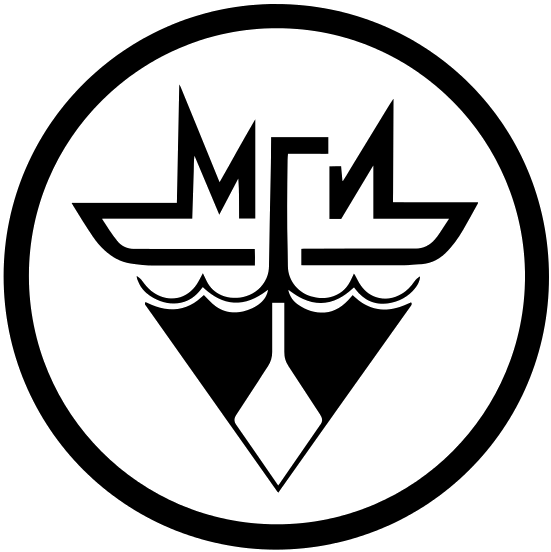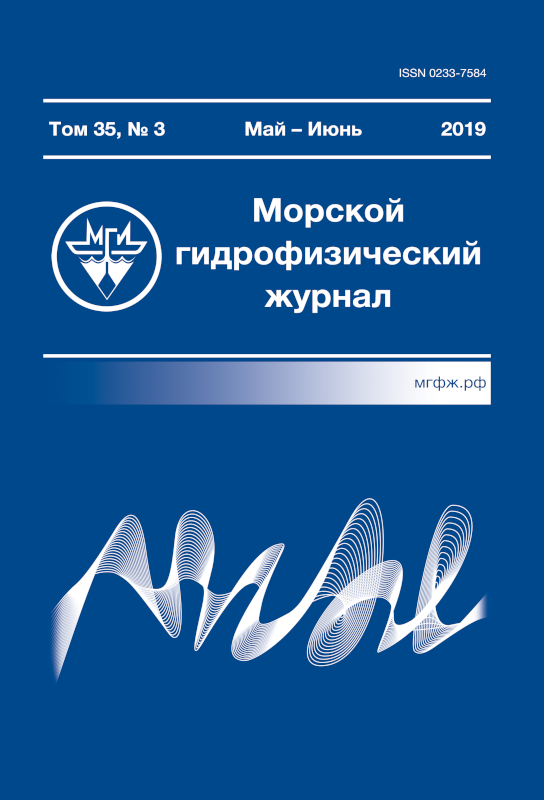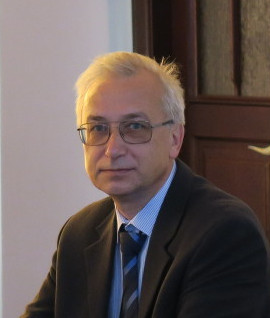Publication ethics and publication malpractice statement
Academic publication ethics is a system of standards of professional conduct in relationships of authors, peer reviewers, editors, publishers and readers during creation, distribution and use of academic papers.
"Misconduct" means forgery, falsification or plagiarism in the preparation, conduction or peer reviewing of studies, or in the presentation of study results, but does not include honest mistakes or difference of opinions.
The editors of Physical Oceanography Journal are governed by the ethical rules and regulations Core practices and Principles of Transparency and Best Practice in Scholarly Publishing developed by the Committee on Publication Ethics (COPE), given in the Declaration of the Association of Science Editors and Publishers “Ethical Principles for Academic Papers” (in Russian) and adopted by the majority of academic journals. Authors, editors, peer reviewers and publishers are required to comply with these rules.
Plagiarism and Falsification
The Editorial Board handles the texts of articles in good faith preventing unfair scientific publications containing plagiarism, manipulation of references, falsification, and fabrication of data from appearing on the pages of its journal. Original manuscripts that have not been published before and meet all the requirements of the editorial policy are accepted for peer reviewing. All manuscripts are checked for borrowings using Antiplagiat program. All borrowed fragments of the work should have a properly formatted reference (and, if necessary, written permission for use from the authors or copyright holders). In case of finding improperly attributed borrowings, the authors finalize the manuscript and attribute borrowings according to the Journal's rules. Plagiarism in any form, including self-plagiarism, unattributed citations, paraphrasing, or appropriation of rights to the results of others' research, is unacceptable. Artificially increased scientometric indices, excessive self-citation, friendly citation, and irrelevant references mislead readers and are interpreted as fraud. When a case of dishonest behavior (i. e. duplication of an article (republishing), unlawful voluminous borrowings, submission of a translated version of an already published article, falsification of data, fraud, etc.) is detected, the editorial board acts under the COPE flowcharts, contacts the authors and requests an explanation from them. In this case, the editorial reserves the right to reject the article and reports the fact to the management of the authors' organization, and imposes a publication ban on the author for one year. If falsification, republishing, plagiarism, copyright infringement, or other dishonest behavior are discovered after publication, the editorial board contacts the author and discusses the problem. If the author's explanations are not satisfactory, the editorial board acts under the COPE Retraction Guidelines and the ASEP Article Retraction Rules. Namely, the case is considered at the meeting of the editorial board, its decision is drawn up in minutes, the article is retracted, and the information thereof is submitted to RSCI and the ASEP Retracted Articles Database.
Authorship
Those individuals are listed as article authors, who:
- Made contribution to the work concept, development, implementation, interpretation, or to analysis and data interpretation.
- Took part in the manuscript preparation or version revision and made valuable amendments.
- Approved the final version of the article to be submitted for publication.
- Are ready to take responsibility for all the work stages and ensure that the issues relating to the accuracy or integrity of any part of the work will be properly investigated and resolved.
These individuals are listed as co-authors. Other participants, who do not meet the authorship criteria, are listed in the “Acknowledgements” section subject to their consent.
The designation of persons who did not participate in the study as authors (so-called "gift" or "guest" authorship), as well as the omission of persons who have made a significant contribution to the work and meet the criteria for authorship, is a gross violation of publication ethics and, if found, will lead to action according to the COPE guidelines), including investigation of its circumstances and reasons with notification of the management of the authors’ organization.
Statement of author contribution
Physical Oceanography Journal promotes research transparency by publishing authors' statements of contribution. Authors are required to include a statement in the manuscript, including review articles, indicating each author's contribution. Authors' statements of contribution are included in the published work.
Copyright
The copyright to this web-site and its content belongs to Federal State Budget Scientific Institution Federal Research Centre “Marine Hydrophysical Institute of RAS”.
Physical Oceanography Journal publishes articles under the Creative Commons Attribution-NonCommercial 4.0 International (CC BY-NC 4.0) license. The materials may be used for non-commercial purposes only.
Conflict of interests
The editorial board of Physical Oceanography Journal informs that all authors and peer reviewers should disclose any conflicts of interests that may arise in relation to the submitted materials.
During article preparation to publication, a conflict of interests may arise when a publication process participant (author, reviewer or editor) is involved in an activity that may improperly influence their opinion whether this activity has actually influenced their opinion or not. Among the most significant conflicts of interest usually are financial activities related to production, e. g. consulting, shareholding, fee obtaining and expert opinion giving.
Conflicts may also arise out of a number of other reasons, i. e. personal relationships, scientific competition. Trust to the expert evaluation process and validity of published articles depends to some extent on how the conflict of interests is connected with the submitted materials, expert evaluation and editors’ decisions. Prejudice can often be revealed and removed by thorough consideration of scientific methods and results of research. Financial interest and its influence are much harder to detect than any other types of conflict of interests. Peer reviewers and other publication participants should inform about an existing conflict of interests, and this information should be publicly available for other participants to estimate the influence of conflict of interests on the publication process.
When submitting an original text (article or letter), the authors are responsible for identifying and disclosing financial and other conflicts of interest that may have affected their work. In the original text, the authors are also obliged to mention all financial and personal connections that are relevant to the submitted work. Any conflicts of interest that might influence the external reviewer's opinion of the original text must be reported to the editorial board. Reviewers should not use the information contained in the work for personal purposes before it is published.
Click here to download a conflict of interests statement form that should be filled out and attached along with the files containing the article text and figures.
Research data policy
Data sharing and data citation are encouraged.
Responsibility
The editorial board does its best to comply with the ethical standards accepted by the international scientific community and to prevent any violations of these standards both in its own work and in relations with all the participants of the scientific publication process: authors, peer reviewers, editors, and publishers. Therefore, the editorial board considers it necessary to establish standards of ethical behaviour for all parties of the publishing process, namely authors, editors of the Journal, and peer reviewers.
Responsibility of author(s)
1. The author takes the responsibility for the novelty and validity of the research results. The article should contain objective results of scientific research. Submitted materials should be the result of the authors’ work. Deliberately erroneous or fabricated statements are unacceptable. The submissions should not violate any third party rights. The author ensures authenticity of the research results presented in the submitted article. The author ensures compliance with all requirements the Journal sets to submitted materials.
2. The authors ensure that no confidential information will be disclosed as the result of publication.
3. By submitting an article to the editorial board, the authors confirm that this article is not being considering by the editorial board of any other journal nor has been published before. It is unacceptable to publish articles with the same content in different journals except for special occasions (e. g. articles translated from another language) provided that the repeated publication has been agreed with the authors and editors of the journals concerned.
4. The authors are required to list any funding sources of the project, results of which are described in the article, as well as to list those contributed to research conduction. The editorial board encourages authors to disclose their relationships with industrial and financial organizations that can result in a conflict of interests.
5. The authors should take an active part in the manuscript review process through timely providing well-reasoned feedback to reviews and making appropriate changes at the peer reviewers’ and editors’ request.
Responsibility of editors
1. The Journal’s editorial board (editor) is governed by the principles of scientificity, objectiveness, competencies, impartiality and is guided by current requirements of the Russian Federation legislation concerning author's rights, plagiarism and ethical standards supported by the community of leading academic journal publishers. The editorial board is also responsible for decision making as to publication of submitted articles.
2. Interaction with the authors is based on the principles of fairness, courtesy, objectiveness, integrity, and transparency.
3. When making a decision as to article publication or rejection, the editorial board (editor) is governed by the following main assessment criteria:
- The submitted article complies with the topic and manuscript requirements of Physical Oceanography Journal.
- The research is novel, relevant and original.
- The performed work provides valid results and is of scholarly importance.
- Contribution of other researchers in the given field is acknowledged and bibliographical references to used works are present.
- All participants who made a significant contribution to the conducted research are listed as co-authors, and the paper submitted to publication is accepted by all co-authors.
- Measures to correct significant mistakes and inaccuracies revealed by the author or editorial board are promptly taken.
4. Unpublished data obtained from manuscripts submitted for consideration should not be used or transferred to any third parties without the author's prior written consent. Measures should be taken to ensure confidentiality of information or ideas learned during editing.
5.The editorial board (editor) considers claims concerning reviewed manuscripts or published materials as well as complaints about violation of ethical standards during assessment, editing and publication of manuscripts. If necessary, the editorial board (editor) publishes corrections, refinements and apologies to the readers. If a conflict has been revealed, the editorial board takes all necessary measures to restore violated rights and further inform the authors and all related parties about the decision they have made.
6. The editors should assess articles only by their scientific content regardless of the authors’ race, gender, sexual orientation, religious and political beliefs, ethnicity and nationality.
7. The Journal editors and editorial board members cannot disclose information about the submitted articles, except to those who are directly related to the article and its publication preparation.
8. When assessing articles, the Journal editors have to get aware of the original information contained in the articles, however, they are not authorized to use it for their own research or other purposes. The editor should withdraw from the manuscript in case of a conflict of interest resulting from competition, collaboration or other relationships with any of the authors, companies and institutions associated with the articles.
9. The editorial board agrees with the author on all changes to the article and the final version to be published. Publication of a text not agreed with the author is an infringement of copyright.
Responsibility of peer reviewers
1. Peer review of articles in the Journal is anonymous. Peer review is performed by external experts specialized in the fields of knowledge which the reviewed article belongs to. If the peer reviewer does not have a sufficient expertise level to evaluate the manuscript, they should inform the editorial board.
2. The peer reviewer should assess the article within the period established by the Journal editorial board (up to one month). If for any reason the peer reviewer cannot perform a review within the established period, they should inform the editorial board.
3. The peer reviewer should not disclose to any third parties information from the articles submitted for reviewing.
4. When assessing articles, the reviewers should seek to be as objective as possible and provide a well-grounded opinion. Personal criticism, derogatory remarks, or slander against the author are unacceptable. The reviewer must withdraw from reviewing if for any reason they cannot evaluate the manuscript fairly and impartially.
5. The reviewer should consider the ethical aspects of the article. If a manuscript is found to contain borrowed material not accompanied by references to the source, as well as if it is similar to another manuscript or a previously published article, if signs of falsification of data, fraud, or other ethical violations are detected, the reviewer should report it to the editorial board.
6. Before publication, the reviewer is not authorized to use the information they obtained during the review process for their personal purposes. In case of conflict of interests arising out of competition, cooperation, or any other relations with any authors, companies, and institutions related to the articles, the reviewer must inform the editorial board and withdraw from work with the manuscript.
We recommend to get aware of case studies and known best practices as described in Best Practice Guidelines on Publication Ethics: A Publisher's Perspective published in International Journal of Clinical Practice, Graf C., Wager E., Bowman A., et al. Int. J. Clin. Pract., 2007; 61 (s152):126.
Policy on submission of preprints and the final published version of the article
When submitting an article, the author should confirm that the article has not been published or accepted for publication in other scientific journals. Articles previously posted by the authors on personal or public web-sites, in repositories of preprints not related to other publishers, are accepted for consideration. In this case, the article should give information about this preprint and link to the resource. The author can post their article (pdf) published in the Journal on personal, popular science, scientific, educational web-sites, repositories, archives, scientific platforms (ResearchGate, Google Scholar, Academia.edu, etc.), social networks with a link to the Journal.
Archiving
Russian State Library
Error correction
If the author discovers significant errors or inaccuracies in the publication, the author should inform the journal editor and work with the editor to correct the errors or, if the errors affect the conclusions of the study, retract the publication as soon as possible. If the editor or publisher has been advised by a third party that the publication contains material errors affecting the scientific integrity of the work, the author must withdraw the article or correct the errors as soon as possible. If the publisher has identified errors related to the publishing process, it shall correct them as soon as possible.
Complaint and statement handling
The authors have the right to appeal against editorial decisions regarding the acceptance or rejection of articles.
1. If the author disagrees with the decision of the editorial board regarding the acceptance or rejection of an article, the author shall apply to the responsible secretary with a written statement, stating the reasons for disagreement with the decision of the editorial board.
2. The responsible secretary considers the application of the author.
3. The decision of the editorial board on the article can be changed in cases where:
- The author has provided additional data, materials, and factual results that were not considered during the initial review of the article.
- The author has provided information about a conflict of interest that was not known to the editorial board.
- The author pointed to a biased reviewer's opinion and unethical behavior in the reviewing process.
4. If there are sufficient grounds, the executive secretary proposes the meeting of the editorial board to modify or uphold the original decision on the publication of the article.
5. If necessary, the editorial board may engage an additional reviewer to make the final decision.
6. The decision regarding the acceptance or rejection of the article based on the results of the review of the preliminary decision is made by the editorial board of the Journal.
7. The decision of the editorial board on the results of the revision of the preliminary decision is final and not subject to re-appeal.
Article retraction (according to the COPE and ASEP Retraction Rules)
Retraction is correction of published information and alerting readers to severe errors, inaccurate data, or violations of publication ethics in an article. It is applied when previously unknown facts are revealed.
Grounds for retraction:
- Inappropriate borrowing (plagiarism) in a published article
- Duplication of an article in several editions
- Self-plagiarism with a large amount of repetition of the study results and text already published in other publications
- Detection of falsification or fabrication (e. g., falsification of experimental data);
- Discovery of severe errors in a publication (e. g., misinterpretation of study results) that call into question its scientific value
- Inaccurate authorship (no one worthy of being an author; individuals not meeting the criteria for authorship are included)
- Implicit conflict of interest
- Republication of an article without the consent of the author
- Other violations
1. Authors, readers, reviewers, and members of the editorial board can initiate the article retraction by writing to the editorial board.
2. The executive secretary requests an explanation from the author.
3. The editorial board considers the application, the author's response, and other known facts and circumstances.
4. The decision to retract a published article is taken by the editorial board if there are sufficient facts in favour of retraction.
5. The executive secretary notifies the initiator of the article retraction and the author in writing of the results of the consideration of the application. It may be decided to send a notice of retraction to the author's organization.
6. In case the committee decides to retract the article, information is published in the Journal that the article is retracted with the indication of metadata of the article.
7. A letter is sent to the databases indexing the Journal stating that the article has been retracted and indicating the reasons therefor.















